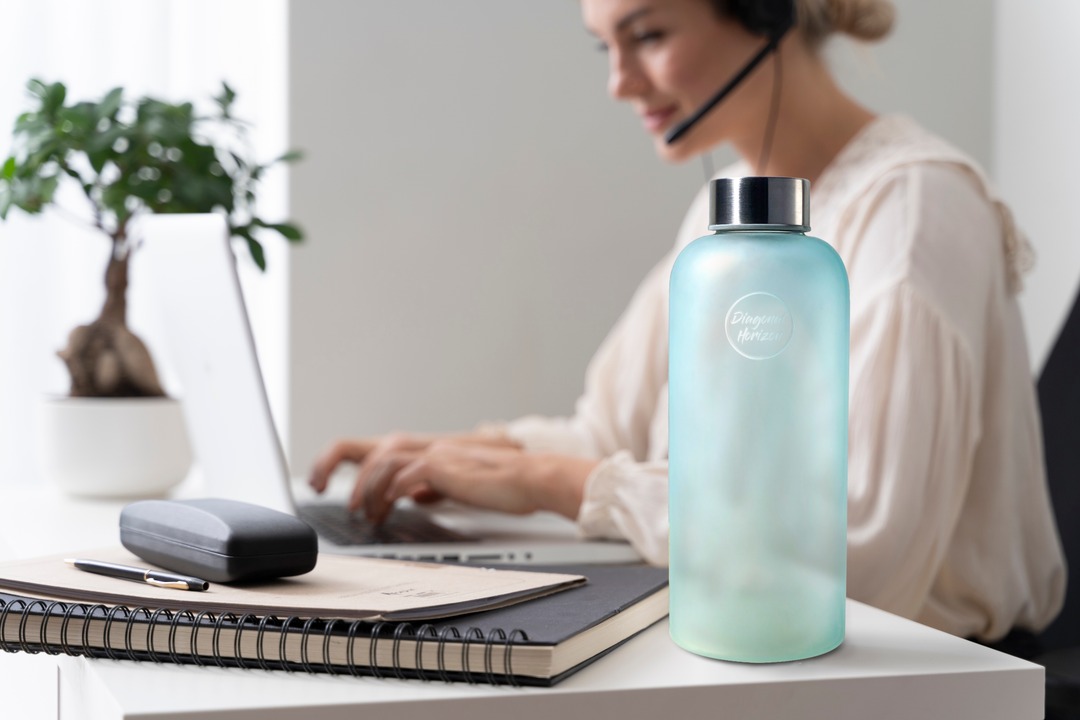Reusable water bottles are economical, aesthetically pleasing, and environmentally friendly. They don’t need advertising simply because their benefits are apparent.
But it’s pretty difficult to buy the best water bottle on the first try—you’ll never guess which part is weak. This article discusses what to look for when choosing a good water bottle that will last you all summer (and fall, too).
Of what?
The material matters. Once upon a time, bottles were made only from Glass, but in the modern world, there is an alternative—even a few. Each material has its advantages and disadvantages. It is essential to understand what you are willing to put up with and what seems unacceptable.
Plastic bottle
Plastic is different from plastic. The bottle must have marks indicating what it is made of (such markings are inscribed in a triangle but maybe without it). It is best if the bottom shows that it is made of Tritan, but the marks “5”, “4”, and “2” are also good. Other types of plastic raise more questions because not all of them can be considered safe. It is essential to ensure that the bottle contains no bisphenol: as a rule, this is marked “BPA free”.
Advantages: low cost, lightweight, and a wide variety of designs.
Disadvantages: In most cases (except Tritan bottles), hot drinks cannot be poured into plastic bottles, and purchasing from a little-known manufacturer can pose a risk of toxicity.
Glass bottle
Glass is an ideal material for those who value the taste of water and its purity. Bacteria multiply more slowly in a glass bottle. It is convenient and easy to wash both by hand and in the dishwasher. This material is 100% safe and does not release particles of harmful substances into the liquid that is inside. Glass bottles also look stylish.
The pros are safety, easy care, and aesthetics. Glass does not affect the taste of water and is suitable for hot drinks and acidic liquids (juices, coffee).
Cons: heavyweight, fragility, high price.
Metal bottle
Metal bottles are often made from food-grade steel, sometimes aluminium, and less usually copper. Supporters of Ayurveda prefer the latter option, but athletes prefer steel.
Steel bottles are usually heavier than plastic bottles, and their designs are limited in variety. But they look severe and masculine. Aluminium bottles are almost as light as plastic bottles but are more easily deformed upon impact.
The pros are safety, strength, durability, easy maintenance, and the metal’s suitability for hot drinks and acidic liquids (juices, coffee).
The cons are a small selection of designs, a high price, sometimes a metallic taste in the water, and heavy bottles.
Silicone bottle
Perhaps the newest and most unusual type of material for a bottle. It is ideal for those who prefer to avoid carrying things that take up extra space in a bag or backpack. It should be noted that a silicone bottle is sometimes lighter than a plastic one. But you don’t have to be afraid of dangerous substances: silicone doesn’t contain them.
Pros: compact, safe, silicone does not affect the taste of water.
Cons: There is a limited number of designs; silicone is not suitable for liquids other than water.
For what?
When choosing a glass water bottle, you should clearly understand who and what it is intended for so that later it does not turn out to be too small/heavy/does not fit the shape.
].Of course, the most important thing for a child is how his bottle looks, but parents must first pay attention to weight and volume. The needs of all children are different, and so is the time spent at school, but primary schoolchildren should not buy bottles that are too large and heavy. The ideal volume is 0.3–0.5 l. The perfect material is plastic.
For walking around the city
A healthy adult can easily carry two litres of water with him, which will be especially useful on a hot summer day. However, in the city, there is always the opportunity to replenish supplies in any store or at work if a cooler is installed there. Therefore, we recommend choosing a 0.5–0.7 litre bottle for women and 0.7–1 litre for men. The material can be any, but plastic and light metal are preferable if your back is sensitive to weight.
